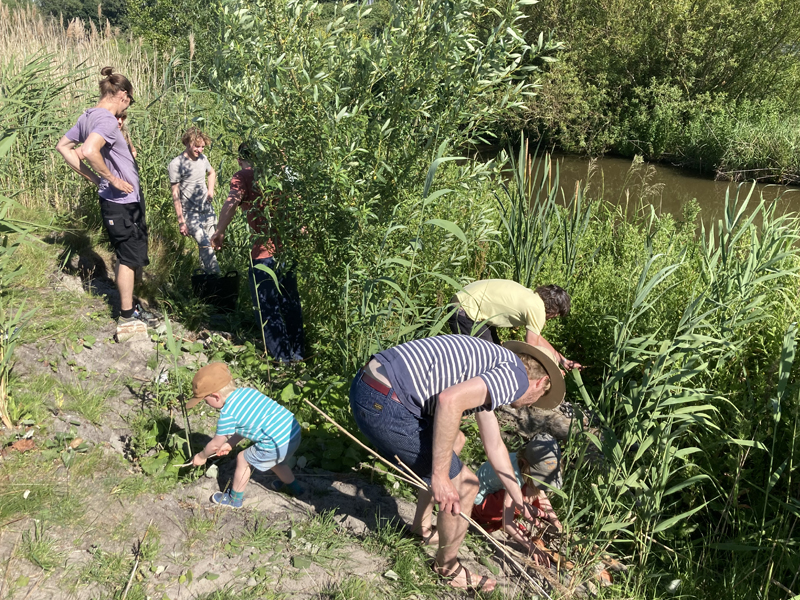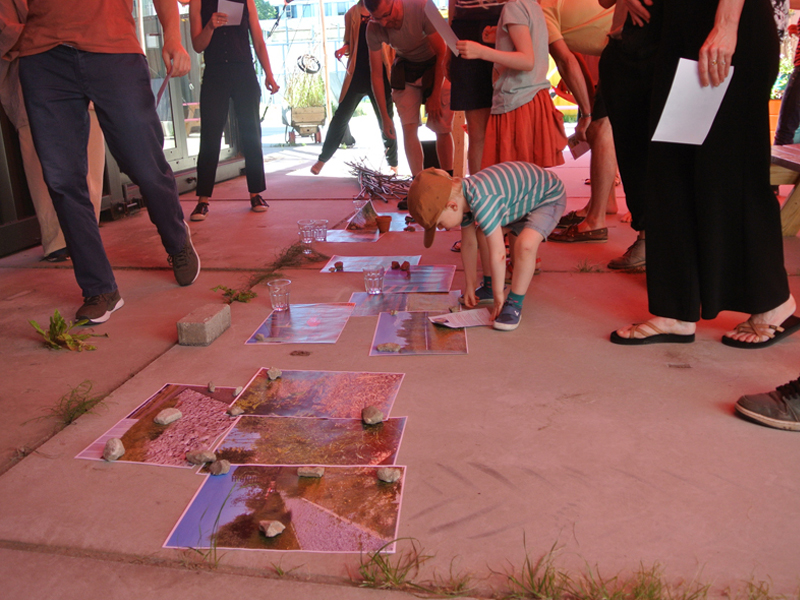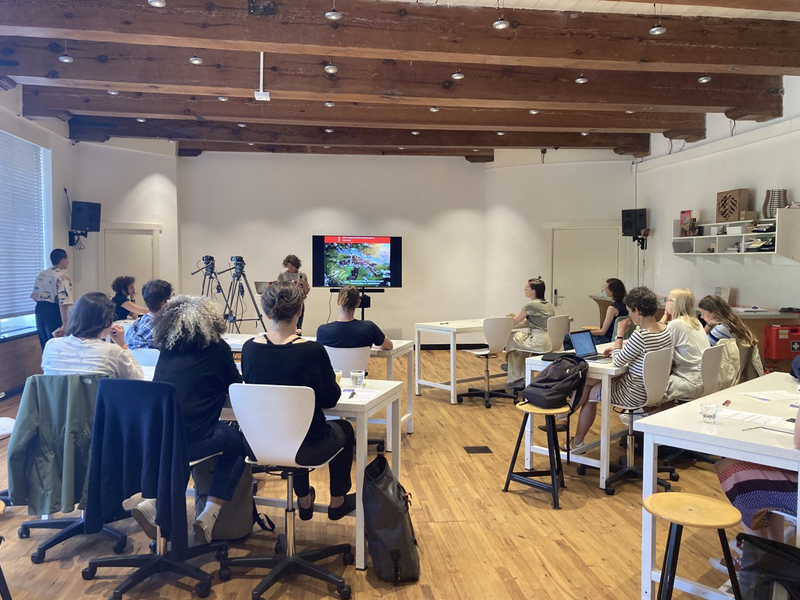Urban regeneration areas are often hotspots for biodiversity; however, they stress the cohabitation of nature and humans due to conflicting uses in limited space and timeframes.
Amsterdam Science Park (ASP) constitutes an interesting living laboratory to test participatory methodologies to include non-human perspectives in the design of meanwhile spaces. T-Lab4 “Urban Design for Sociality and Wellbeing” and T-Lab 3 “Citizens-led Smartness” collaborated with Waag to develop collaborative practices to map local biodiversity and provide design solutions for target animal species considering their needs and the human impacts on their environment.
In June 2022 two activities were implemented in Amsterdam. An international talk brought together Els Corporaal (city ecologist City of Amsterdam), Fleur Jager (volunteer at Anna’s Tuin and Ruigte permaculture association at aSP), Federica Larcher (assistant professor in Horticulture, Landscape and Urban ecology at University of Torino, Italy), Sema Bekirovic (visual artist and curator focusing on non-human art) to debate on the role of nature in temporary interventions and the inclusion of non-human stakeholder in urban transformation.
On the following day the first Animal-oriented Design Workshop was implemented at Amsterdam Science Park with the local community (teachers and students from university as well as some teachers and families from a primary school). The workshop required a preparatory phase: firstly, a hybrid biodiversity mapping of the site was run deploying municipal reports and a citizen-led app (iNaturalist); secondly, upon the mapping outcomes, a portfolio of do-it-together solutions and a set of cards (animal portraits, places, solutions) were developed. Cards allow a broad engagement of participants as they address different audiences, from kids to adults, and different cultural backgrounds they can be easily used onsite and tailored according to the characteristics of real places. Participants acquired an alternative perspective on urban ecosystems through an empathic approach; after picking an animal portrait card, they were asked to tell its habits and observe the surrounding environment with their new perspective. Finally, they matched their animals with available places and solutions cards to identify a shelter to be built during the workshop. The participants were then provided with waste materials to build small temporary solutions on site (e.g., a salamander house and a slide for dragonflies).
The participants were able to transfer the knowledge acquired about biodiversity into a tangible solution on site, which remains also as an action marker. A bond between participants, animals and site was established; this enables the replication of the solutions in other contexts to create more habitable urban environments.
Additional resources:
Animal-oriented solutions Portfolio
Deep-dive workshop (capacity building)
Environmental impact driven by technology on animals in urban areas
Authors: Andrea Balestrini, Nicoletta Piersantelli, Stella Schmidtler, Anna-Lena Bauer, Davide Pallotta, Marta Arniani, Hadas Zohar
- Do-It-Together Eco-practices
- Wild and cultivated spaces
Animal-oriented Design Workshop
Explore the potential of including non-human perspectives into placemaking processes in urban open spaces through meanwhile uses focused on local biodiversity




